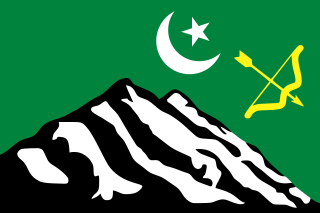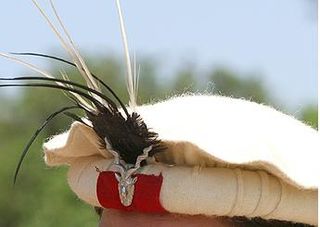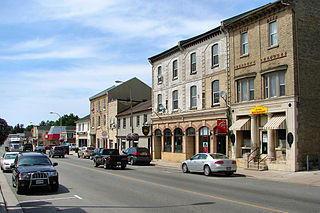Related Research Articles

Hunza, also known as Kanjut was a princely state in the Gilgit Baltistan region of Pakistan. Initially, it functioned as a principality and subsequently became a princely state under a subsidiary alliance with the British India starting in 1892 and continuing until August 1947. For a brief period of three months, it remained unaligned after gaining independence, and then from November 1947 until 1974, it retained its status as a princely state within Pakistan. The territory of Hunza now constitutes the northernmost part of Gilgit-Baltistan, Pakistan.

The Nuristanis are an ethnic group native to the Nuristan Province of northeastern Afghanistan and Chitral District of northwestern Pakistan. Their languages comprise the Nuristani branch of Indo-Iranian languages.
The Jadoon are a Pashtun tribe residing mostly in the Abbottabad and Haripur of the Hazara Division, and partly in the Swabi district of the Khyber Pakhtunkhwa province of Pakistan.

Dardistan refers to a region where Dardic languages are spoken. The terms "Dardic" and "Dardistan" are not indigenous to the region, and were coined by Gottlieb Wilhelm Leitner. The legitimacy of the term has been called into question. The region also includes a number of non-Dardic peoples and languages.

The Koosh ball is a toy ball made of rubber filaments (strands) radiating from a steel-bound core, patented in 1987 by Scott H. Stillinger. The company later expanded their product line to include 50 other Koosh-related products, including keyrings, baseball sets, and yo-yos.

The pakol or pakul is a soft, flat, rolled-up, round-topped men's cap, usually worn in Afghanistan and Pakistan. It is typically made of wool and found in a variety of earthy colours, such as brown, black, grey, ivory, or dyed red using walnut. The pakol is believed to have originated in Chitral, or Gilgit-Baltistan in Pakistan.

Baltit Fort is a fort in the Hunza valley, near the town of Karimabad, in the Gilgit-Baltistan region of northern Pakistan. Founded in the 8th century CE, it has been on the UNESCO World Heritage Tentative list since 2004.

The Hunza Valley is a mountainous valley in the northern part of the Gilgit-Baltistan region of Pakistan.

Torwali is an Indo-Aryan language spoken by the Torwali people, and concentrated in the Bahrain and Chail areas of the Swat District in Pakistan. The Torwali language is said to have originated from the pre-Muslim communities of Swat. It is the closest modern Indo-Aryan language still spoken today to Niya, a dialect of Gāndhārī, a Middle Indo-Aryan language spoken in the ancient region of Gandhara.
Gawri (ګاوری), also known as Kalami (کالامي), or Bashkarik, is an Indo-Aryan language spoken in Swat Kohistan region in the upper Swat District and in the upper Panjkora river valley of Upper Dir District, Khyber Pakhtunkhwa, Pakistan.

Colonel John Biddulph was a British soldier, author and naturalist who served in the government of British India.

Lucan Biddulph is an incorporated township in southwestern Ontario, Canada. It was formed on January 1, 1999, by amalgamating the Village of Lucan with Biddulph Township. The township had a population of 4,700 people in the Canada 2016 Census, up 8.3% from 4,388 people in 2011, and covers an area of 169.14 km2 of land within Middlesex County.
Shinkari is an area in Kohistan of the Indus Valley in the Hindu Kush mountains of Pakistan.

The Shina or Gilgitis are an Indo-Aryan ethnolinguistic group primarily residing in Gilgit–Baltistan and Indus Kohistan in Pakistan, as well as in the Dras Valley and Kishenganga Valley (Gurez) in the northern region of Jammu and Kashmir and Ladakh in India. They speak an Indo-Aryan language, called Shina and their geographic area of predominance is referred to as Shenaki.
Matthew Atmore Sherring (1826–1880), usually cited as M. A. Sherring, was a Anglican missionary in British India who was also an Indologist and wrote a number of works related to India. He was educated at Coward College, a dissenting academy in London that trained people for nonconformist ministry.

Sir Richard Biddulph Martin, 1st Baronet was an English banker and Liberal Party politician.
Shahreis were the pre-Islamic rulers of Gilgit before the advent of the Muslim Trakhane. Shri Buddutt was the last of the Shahreis.

In 1759, the Qing dynasty of China defeated the Dzungar Khanate and completed the conquest of Dzungaria. Concurrent with this conquest, the Qing occupied the Altishahr region in modern southern Xinjiang, which had been settled by Muslims who followed the political and religious leadership of Afaq Khoja.

John Biddulph Martin was an English banker and statistician.
The Torwali people are an Indo-Aryan ethnolinguistic group located in the Swat district of Pakistan. The Torwali people have a culture that values the telling of folktales and music that is played using the sitar. They speak an Indo-Aryan language called Torwali.
References
- ↑ Biddulph, John (1880). Tribes of the Hindoo Koosh. Calcutta, India: Office of the Superintendent of Government Printing.
- ↑ Biddulph, John (2004-01-15). Tribes of the Hindoo Koosh. Adamant Media Corporation. ISBN 9781402152726.
- ↑ "Tribes of the Hindoo Koosh(1880)". Scribd.
- ↑ "Tribes of the Hindoo Koosh". Good Reads.